Kenneth Atchity's Blog, page 124
March 1, 2018
Michael A Simpson's Sons of My Fathers best "opening line" chosen by Publishers Weekly!
Published on March 01, 2018 00:00
February 27, 2018
It’s The Oscars on TALKish, The Halli Casser-Jayne Show. Join Halli and director Charles Matthau for an Oscar celebration, February 28th, 3 pm ET.
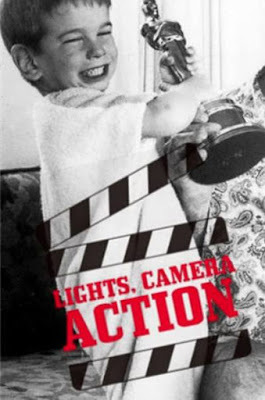 The Oscars! Hooray for Hollywood and hooray for the Oscars! This year’s 90th Academy Awards is the subject of The Halli Casser-Jayne Show, Wednesday, February 28, 3 pm ET. Joining Halli at her table is director, writer, producer, actor, and raconteur, Charles Matthau.
The Oscars! Hooray for Hollywood and hooray for the Oscars! This year’s 90th Academy Awards is the subject of The Halli Casser-Jayne Show, Wednesday, February 28, 3 pm ET. Joining Halli at her table is director, writer, producer, actor, and raconteur, Charles Matthau.He attended The Oscars when he was but a boy. Director Charles Matthau was weaned on film. His father was Academy Award-winning actor and comedian, Walter Matthau, best known for his role as Oscar Madison in The Odd Couple. Charles began acting when he was a kid; as a child he appeared in such films as Charley Varrick, The Bad News Bears and House Calls before at the ripe young age of 24, he turned to directing with The Grass Harp, from a novella by Truman Capote, and the made-for-TV movie The Marriage Fool. A graduate of the film school at the University of Southern California, Matthau also has directed Doin’ Time on Planet Earth, Her Minor Thing, Baby-O, and Freaky Deaky starring Christian Slater based on Elmore Leonard’s book, which Matthau also wrote. His latest film is The Book of Leah, starring Armand Assante currently in post production.
Film, Academy Awards, movies, actors, directors…it’s The Oscars on TALKish, The Halli Casser-Jayne Show. Join Halli and director Charles Matthau for an Oscar celebration, February 28th, 3 pm ET. The party takes place at Halli Casser-Jayne dot com.

Published on February 27, 2018 11:41
February 22, 2018
Strand Magazine: How being a psychotherapist helped me become a better writer by Dennis Palumbo
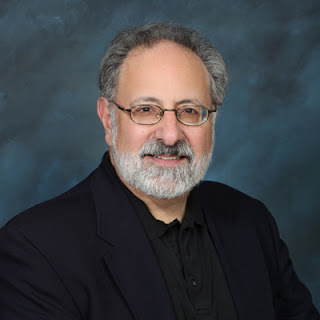 I must admit, I’ve had an interesting career journey. For many years, I was a Hollywood screenwriter, after which I became a licensed psychotherapist specializing in treating creative types in the entertainment community. Now, after 28 years of listening to hundreds of people’s most intimate stories, I’ve fulfilled a lifelong dream and begun a series of crime novels.
I must admit, I’ve had an interesting career journey. For many years, I was a Hollywood screenwriter, after which I became a licensed psychotherapist specializing in treating creative types in the entertainment community. Now, after 28 years of listening to hundreds of people’s most intimate stories, I’ve fulfilled a lifelong dream and begun a series of crime novels.Given the kinds of books I write, you might be wondering what, if anything, do a Hollywood psychotherapist and a suspense novelist have in common? Actually, quite a bit.
For both a therapist and a crime novelist, it’s the mystery of character itself that intrigues, puzzles, and continually surprises. As a therapist, I’ve borne witness to the awful suffering, painful revelations, and admirable courage of my patients, many of whom have survived unbelievable abuse, neglect, and loss. Not to mention those whose lives have been marred by substance use, violence, and severe mental illness.
How people cope with these issues and events, how well or poorly they meet these challenges, goes directly to the heart of the therapeutic experience. My job as their therapist is to help patients identify self-destructive patterns of behavior and to empower them by providing tools to address these patterns and, hopefully, alter them.
So much for my day job. Moonlighting as a suspense novelist, I find myself doing pretty much the same thing with my fictional characters. As a mystery writer, I believe
that crime stems from strong emotions, and strong emotions stem from conflict.
Kind of like life.
Which means the secret to crafting satisfying thrillers lies in exploring who your characters are (as opposed to who they say they are), what it is they want (or think they need), and the lengths to which they’ll go to get it.
Moreover, using my experience as a licensed psychotherapist, I’ve woven many of the situations and people I’ve encountered into my crime novels. Among these is a particularly interesting patient I once met at the psychiatric hospital where I did my clinical internship. Now, many years later, he’s the inspiration for my hero’s best friend, a paranoid schizophrenic named Noah Frye. Much like this patient from long ago, the Noah of my novels is funny, combative, and achingly aware of the reality of his situation.
I’ve used other aspects of my life experience as well. For example, although my practice is in Los Angeles, the novels take place in Pittsburgh, my hometown. In addition, the series hero, a psychologist named Daniel Rinaldi who specializes in treating the victims of violent crime, shares a similar background to my own, from his Italian heritage to his love of jazz to his teenage years spent working in the Steel City’s sprawling produce yards. (Though, as each novel’s narrative hurtles Rinaldi into a vortex of murder and conspiracy, he reveals himself to be a lot braver and more resourceful than I am!)
There’s another connection between my role as a therapist and my role as a mystery writer. Like the therapist, the crime novelist swims in an ocean of envy, greed, regret, and desire. As a therapist does, the crime novelist must relate to his or her characters. Must be able to understand and empathize with their wants and needs. Must, in fact, go inside their heads and think as they think, feel as they must feel.
Since most of my patients are in the entertainment industry—writers, actors, directors, and others—they present a broad canvas of creative passions, lofty ambitions, wild yearnings, and devastating defeats. They love and hate deeply, with an artist’s fervor, and this extends beyond career considerations into the most intimate aspects of their personal lives.
So too the crime novelist must create and endow his or her characters with out-sized passions, hopes, and dreams. How else can things go so awry in their lives? How else can things lead, as if inevitably, to treachery, blackmail, murder?
All the things, in other words, that make reading a crime novel so satisfying!
BIO: Formerly a Hollywood screenwriter (My Favorite Year; Welcome Back, Kotter, etc.), Dennis Palumbo is now a licensed psychotherapist and author of Writing From the Inside Out (John Wiley). His mystery fiction has appeared in Ellery Queen’s Mystery Magazine, The Strand, Written By, and elsewhere, and is collected in From Crime to Crime (Tallfellow Press). His series of mystery thrillers (Mirror Image, Fever Dream, Night Terrors, Phantom Limb, and the latest, Head Wounds, all from Poisoned Pen Press) features psychologist Daniel Rinaldi, a trauma expert who consults with the Pittsburgh Police.
For more info, please visit www.dennispalumbo.com

Published on February 22, 2018 00:00
February 20, 2018
Archaeolibrarian - I Dig Good Books! Archaeolibrarian - I Dig Good Books! Reviews Michael A. Simpson's Sons of My Fathers
 Add to Goodreads | BookLikes
Add to Goodreads | BookLikes
Genre:#Historical, #Biography
Synopsis:Sons of My Fathers, based on the true story of author Michael A. Simpson’s family, is a multi-generational journey that intertwines two dramatic stories set one hundred years apart—the heroic saga of 19-year-old Ulysses Simpson who, when "hell comes to Georgia," joins his father on a course of revenge, a path that will forever change the destiny of their clan. And the true tale of another young Simpson man six generations later who, despite his moral reservations, enlists in the U.S. Army, following in the footsteps of his father who was a WWII Marine Corps combat veteran and one of the legendary fighting force's elite instructors during the Korean War.
When Ron volunteers as a "walking dead"—the term for those who fly unarmed medevac helicopters during combat because of their high mortality rate—but is instead assigned to fly a Huey gunship, he fights a personal war with himself over whether to keep a century-old family oath. As his brother Michael comes of age and experiences his first love, Ron's fateful decision forces him to confront his family's past and risk sacrificing his own future, an act that ultimately sets a landmark precedent for "soldiers of conscience" who would follow him in military service.
Deeply personal and compellingly written by the younger brother in this story, the book is uniquely set against America's involvement in two great civil wars—our country's own conflict in the 1860s and Vietnam in the late 1960s. It is an evocative journey into the author's family history and the universal themes central to it—the bonds of family and star-crossed love, duty versus faith, the true nature of patriotism and conscience in war, and the turbulent end of innocence. Rich in emotional textures, Sons of My Fathers is a transformative and timeless coming-of-age narrative.
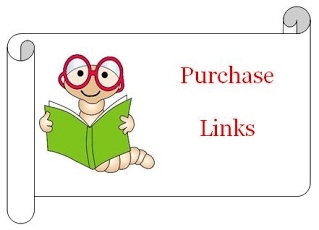 Universal Link
(one click for every reader everywhere)
Universal Link
(one click for every reader everywhere)
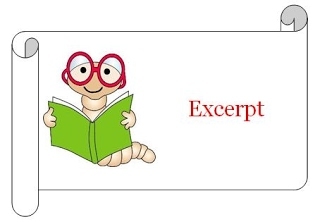
Other than his mother’s lullabies, the whistle of the Dixie Flyer was the earliest sound Michael Simpson could remember hearing.
Since the time of Baylis Simpson and the Confederacy, the locomotive’s melancholy cry had announced its passage through Forest Park, a quiet Georgia town of hard work and modest dreams snuggled on Atlanta’s southern doorstep. The rail line pierced through the heart of this blue-collar community, running parallel to Main for several blocks before bending south, just before the street emptied out onto Jonesboro Road in front of the Fort Gillem Army base. The road was the same one that Rhett Butler and Scarlet O’Hara used for their imaginary escape from Atlanta. The fictional Tara plantation was said to have been located just a short stride down its blacktop.
Every night of Michael’s young life, the Flyer’s whistle beckoned him, filling his imagination with a long-vanquished landscape of graceful mansions and stately plantations, of hoop-skirted ladies who thought about things tomorrow and men who frankly didn’t give a damn.
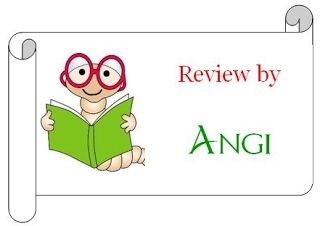 5 out of 5 (exceptional)
5 out of 5 (exceptional)
Independent Reviewer for Archaeolibrarian - I Dig Good Books!
I'm not usually a 5 star reviewer but.....
Two stories that reverberate the lessons of life through time. A story of love, hate, war and peace. There are real life lessons to be learnt by people everywhere in the pages of this book.
I laughed and cried reading this. It's such a brutally honest book, with some shocking events in the chapters. It was a book I devoured, wanting to hear about the characters and how things panned out.
I loved how determined Baylis was. Also Ron who followed his convictions and saw through the consequences of these, even at a loss to himself.
I haven't read a book like this in a long time that deals with real events, feelings and people, comparing different eras, but showing so starkly how humanity seems to make errors and repeat them.
Absolutely awesome read. Thank you Michael A Simpson!
* A copy of this book was provided to me with no requirements for a review. I voluntarily read this book, and my comments here are my honest opinion. *
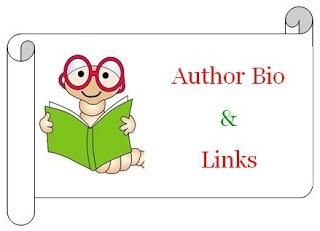 Michael A. Simpson is a writer, director and producer of award-winning documentaries and feature films (whose credits include the Oscar-winning “Crazy Heart,” “Hysteria,” and “Kidnapping Mr. Heineken”). He continues his older brother Ron's tradition of questioning authority and speaking out against social and political injustice, as his friends, both real and virtual, will attest. He grew up in dark rooms watching flickering images on a screen, is a connoisseur of raisin oatmeal cookies, a walking storehouse of music knowledge and trivia, finds reasons to get his passport inked whenever possible, and remains a “rebel without a pause.” "Sons of My Fathers," based on his family's history, is his first book.
Michael A. Simpson is a writer, director and producer of award-winning documentaries and feature films (whose credits include the Oscar-winning “Crazy Heart,” “Hysteria,” and “Kidnapping Mr. Heineken”). He continues his older brother Ron's tradition of questioning authority and speaking out against social and political injustice, as his friends, both real and virtual, will attest. He grew up in dark rooms watching flickering images on a screen, is a connoisseur of raisin oatmeal cookies, a walking storehouse of music knowledge and trivia, finds reasons to get his passport inked whenever possible, and remains a “rebel without a pause.” "Sons of My Fathers," based on his family's history, is his first book.Amazon | BookLikes | Goodreads
Published on February 20, 2018 00:00
February 17, 2018
Guest Post: Perspective and balance by Jerry Amernic
 The call came on a Wednesday morning. They were a group whose guest speaker had suddenly taken ill and was in the hospital, and could I come and take his place. And when might that be?
The call came on a Wednesday morning. They were a group whose guest speaker had suddenly taken ill and was in the hospital, and could I come and take his place. And when might that be?The very next day.
Well, they say it’s best to be flexible in life and so, I did it. My topic was A Crusader for Preserving History and while it was short notice – this was as short as it gets – I did manage to bring some books and give them an hour of my schtick which sort of goes like this.
First, put them at ease and offer to speak to their book clubs; this particular group had four of them! Then explain that I’m a writer who talks about heroes, history and ‘perspective.’ What does that mean?
Remember the movie ‘Back to the Future?’ It takes place in 1985 and Marty McFly returns to the 1950s where he tells the crazy scientist played by Christopher Lloyd about the future.
“Who’s the President in 1985?” Lloyd asks.
“Ronald Reagan,” McFly says.
“The actor?” replies the surprised Lloyd. “Who’s the Vice President? Jerry Lewis?”
Funny as that exchange was then, it doesn’t seem so far-fetched now. In 2018. Because it’s all about perspective. We’ve been there, we’ve seen the future and anything is possible.
That accomplished, the presentation continues with a discussion about my books – fiction and non-fiction – and the hero in each of them. And not losing sight of this thing called perspective.
Perspective means you can be a college student who just saw the film ‘Dunkirk’ and loved it, but you don’t know who Winston Churchill was.
Perspective means you can be a refugee from a war-torn country who comes to the West only to wonder what everyone is complaining about over here.
Perspective means you can be a woman who’s fed up with a lifetime of men taking advantage and so, you take part in a march and carry a sign that says ‘Men ruin everything’ and really believe it.
It’s all about perspective. But alas, each of us has different experiences and tends to reach conclusions based on what we know, what we’ve done or what we were told.
This could be why so many people hate so many other people. And yet, perspective is a two-edged sword. On one hand, it can open up the world and on the other, it can be a killer.
In a court proceeding, they start with a Statement of Facts which is a good starting point as long as we realize that an apple is an apple and a banana is a banana. However, nowadays that is fast becoming a blur with so many charlatans out there who put their own fanciful spin on history with alternative facts, fake news, what have you.
Which makes the Statement of Facts more important than ever.
Jerry Amernic is a Canadian writer of fiction and non-fiction books. He is the author of the Holocaust-related novel 'The Last Witness' and the biblical-historical thriller 'QUMRAN'


Jerry Amernic
Ph: 416-284-0838
Mobile: 416-707-8456
www.jerrythenovelist.com

Published on February 17, 2018 00:00
February 16, 2018
Archaeolibrarian - I Dig Good Books! Archaeolibrarian - I Dig Good Books! Reviews Michael A. Simpson's Sons of My Fathers
 Add to Goodreads | BookLikes
Add to Goodreads | BookLikes
Genre:#Historical, #Biography
Synopsis:Sons of My Fathers, based on the true story of author Michael A. Simpson’s family, is a multi-generational journey that intertwines two dramatic stories set one hundred years apart—the heroic saga of 19-year-old Ulysses Simpson who, when "hell comes to Georgia," joins his father on a course of revenge, a path that will forever change the destiny of their clan. And the true tale of another young Simpson man six generations later who, despite his moral reservations, enlists in the U.S. Army, following in the footsteps of his father who was a WWII Marine Corps combat veteran and one of the legendary fighting force's elite instructors during the Korean War.
When Ron volunteers as a "walking dead"—the term for those who fly unarmed medevac helicopters during combat because of their high mortality rate—but is instead assigned to fly a Huey gunship, he fights a personal war with himself over whether to keep a century-old family oath. As his brother Michael comes of age and experiences his first love, Ron's fateful decision forces him to confront his family's past and risk sacrificing his own future, an act that ultimately sets a landmark precedent for "soldiers of conscience" who would follow him in military service.
Deeply personal and compellingly written by the younger brother in this story, the book is uniquely set against America's involvement in two great civil wars—our country's own conflict in the 1860s and Vietnam in the late 1960s. It is an evocative journey into the author's family history and the universal themes central to it—the bonds of family and star-crossed love, duty versus faith, the true nature of patriotism and conscience in war, and the turbulent end of innocence. Rich in emotional textures, Sons of My Fathers is a transformative and timeless coming-of-age narrative.
 Universal Link
(one click for every reader everywhere)
Universal Link
(one click for every reader everywhere)
 Other than his mother’s lullabies, the whistle of the Dixie Flyer was the earliest sound Michael Simpson could remember hearing.
Other than his mother’s lullabies, the whistle of the Dixie Flyer was the earliest sound Michael Simpson could remember hearing.Since the time of Baylis Simpson and the Confederacy, the locomotive’s melancholy cry had announced its passage through Forest Park, a quiet Georgia town of hard work and modest dreams snuggled on Atlanta’s southern doorstep. The rail line pierced through the heart of this blue-collar community, running parallel to Main for several blocks before bending south, just before the street emptied out onto Jonesboro Road in front of the Fort Gillem Army base. The road was the same one that Rhett Butler and Scarlet O’Hara used for their imaginary escape from Atlanta. The fictional Tara plantation was said to have been located just a short stride down its blacktop.
Every night of Michael’s young life, the Flyer’s whistle beckoned him, filling his imagination with a long-vanquished landscape of graceful mansions and stately plantations, of hoop-skirted ladies who thought about things tomorrow and men who frankly didn’t give a damn.
 5 out of 5 (exceptional)
5 out of 5 (exceptional)
Independent Reviewer for Archaeolibrarian - I Dig Good Books!
I'm not usually a 5 star reviewer but.....
Two stories that reverberate the lessons of life through time. A story of love, hate, war and peace. There are real life lessons to be learnt by people everywhere in the pages of this book.
I laughed and cried reading this. It's such a brutally honest book, with some shocking events in the chapters. It was a book I devoured, wanting to hear about the characters and how things panned out.
I loved how determined Baylis was. Also Ron who followed his convictions and saw through the consequences of these, even at a loss to himself.
I haven't read a book like this in a long time that deals with real events, feelings and people, comparing different eras, but showing so starkly how humanity seems to make errors and repeat them.
Absolutely awesome read. Thank you Michael A Simpson!
* A copy of this book was provided to me with no requirements for a review. I voluntarily read this book, and my comments here are my honest opinion. *
 Michael A. Simpson is a writer, director and producer of award-winning documentaries and feature films (whose credits include the Oscar-winning “Crazy Heart,” “Hysteria,” and “Kidnapping Mr. Heineken”). He continues his older brother Ron's tradition of questioning authority and speaking out against social and political injustice, as his friends, both real and virtual, will attest. He grew up in dark rooms watching flickering images on a screen, is a connoisseur of raisin oatmeal cookies, a walking storehouse of music knowledge and trivia, finds reasons to get his passport inked whenever possible, and remains a “rebel without a pause.” "Sons of My Fathers," based on his family's history, is his first book.
Michael A. Simpson is a writer, director and producer of award-winning documentaries and feature films (whose credits include the Oscar-winning “Crazy Heart,” “Hysteria,” and “Kidnapping Mr. Heineken”). He continues his older brother Ron's tradition of questioning authority and speaking out against social and political injustice, as his friends, both real and virtual, will attest. He grew up in dark rooms watching flickering images on a screen, is a connoisseur of raisin oatmeal cookies, a walking storehouse of music knowledge and trivia, finds reasons to get his passport inked whenever possible, and remains a “rebel without a pause.” "Sons of My Fathers," based on his family's history, is his first book.Amazon | BookLikes | Goodreads
Published on February 16, 2018 00:00
February 14, 2018
In Conversation with Dennis Palumbo about HEAD WOUNDS
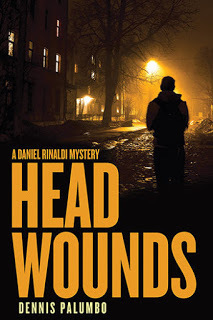 Mike Barson: HEAD WOUNDS is the fifth novel in your series about psychologist Daniel Rinaldi, who consults with the Pittsburgh police. Unlike some authors, you do not write a new book every year… Is that because you spend a lot of time doing research for each new entry?
Mike Barson: HEAD WOUNDS is the fifth novel in your series about psychologist Daniel Rinaldi, who consults with the Pittsburgh police. Unlike some authors, you do not write a new book every year… Is that because you spend a lot of time doing research for each new entry?Dennis Palumbo: Research is always an important aspect of each novel, but the primary reason for the gap between books is that I have a full-time private therapy practice (35-40 patients a week). So my writing time is pretty much limited to lunch hours and the weekends. I’d love to put out a new book every year, but given my current clinical schedule, it’s not possible.
MB: Even though you have lived in Los Angeles for decades, you continue to set the Rinaldi series in your hometown of Pittsburgh. What are a couple of the things you particularly love about Pittsburgh?
DP: There are too many to list, but I’d definitely start with the people—friendly, colorful, opinionated, and with familial roots going back generations. Certainly true of my Italian family, tracing back to immigrants who arrived at Ellis Island. Then, as a locale in which to set a mystery series, the city itself is an intriguing amalgam of old and new, transitioning from a blue collar, industrial town into a white collar, state-of-the-art tech hub. As you might imagine, this has resulted in an uneasy clash of cultures that I get to explore in my Rinaldi series.
MB: As a licensed psychotherapist, you have knowledge that is not available to us civilians… Have you ever drawn on that expertise to help shape the villains in this series?
DP: Yes, primarily from my earliest clinical work as a staff member at a psychiatric facility. Plus all the research I’ve done on psychopathology and various personality disorders. In terms of how Daniel Rinaldi helps victims of violent crime, I was privileged to work with one of the nation’s leading trauma experts, Dr. Robert Stolorow. My fictional psychologist incorporates much of the wisdom I gleaned from those years when treating these patients.
MB: Growing up, were there mystery authors whom you admired particularly? Did any of them influence your approach to the Rinaldi novels once you commenced writing them?
DP: Wow, so many to mention! I loved Holmes as a kid, and devoured Rex Stout and Dickson Carr. As an adult, I discovered Chandler and Hammett, as well as Patrica Highsmith, Ruth Rendell and Ross MacDonald. For influences on my Rinaldi novels I’d have to say, first, Michael Connelly’s Bosch books. I also love Dennis Lehane, Richard Price, the late Sue Grafton, and Jeffrey Deaver.
MB: Have you ever received a comment or suggestion from a fan that you subsequently incorporated into one of the Rinaldi books?
DP: Yes, many times over the years. In particular, I’m always amused by fans who live in or know the Pittsburgh area. They rarely comment on the characters or plot, but point out that I have a street name wrong, or I that I mentioned a building that’s been torn down. My favorite comment was from a Pittsburgh city planner, who said she loved my books but felt that the route I describe for Rinaldi’s trip home from work doesn’t make sense given the rush hour traffic. So she laid out a better route, which I adapted and used in the fourth book, Phantom Limb. I even gave her an acknowledgement at the front of the book.
MB: When you are reading for pleasure, whose work among your fellow contemporary crime writers do you particularly enjoy?
DP: Michael Connelly, Dennis Lehane, Sue Grafton, Thomas Perry, and Tim Hallinan. I also like Gillian Flynn, Robert Crais, Richard Price, Jeffrey Siger and April Smith. Again, I’m sure I’m forgetting dozens of wonderful authors whose names won’t occur to me until later!
HEAD WOUNDS is published by Poisoned Pen Press
Read more

Published on February 14, 2018 00:00
February 12, 2018
9 Powerful Secrets That Will Supercharge Your Fiction
Secrets are the engine that keep a story moving forward.by Ruth Harris

Shhh!
Secrets.
Everyone has them.
Every book must have at least one because secrets are the jet-powered engine that propels fiction forward. Ever notice how many blurbs in the daily BookBub email include the word secret?
Secrets provide motivation, plot, character, even a setting (a haunted house, anyone?) From Madame Bovary to Carrie, from Rebecca to Big Little Lies, from thrillers to romance, from mystery to women’s fiction to sci-fi, every story revolves around a secret.
Secrets ripple outward and can produce unexpected consequences a writer can take advantage of. Secrets need to be protected, denied, defended, and excused. This means they will have predictable (and unforeseen) consequences. These consequences will affect the people who guard them, excuse them, or wilfully blind themselves to their existence.
People with secrets are good at keeping them—until they’re not—or else until some external event spills the beans.
For example: a nuclear leak from a secret underground testing site that becomes a global headline. The slip up—the “tell”—will then become a major turning point in a novel.
In fiction, secrets must be revealed, and the tension secrets create must be resolved. As you plot, plan or pants your book, you will find that a well-chosen secret will provide you with a focus.
That focus will energize your writing—and your book.
1. Secrets With A Silver Lining
Silver lining secrets can work well in romance or cozy mysteries.
What if someone finds out that the Famous TV Chef thinks the local greasy spoon makes better french fries? Yes, better than than the ones FTC makes in her fancy, custom-designed, multimillion-dollar kitchen.
While that might be embarrassing, it won’t kill anyone unless someone adds poison. (That could work in a thriller or a mystery). Of course, that might not even necessarily end the FTC’s career. With shrewd PR, the Greasy Spoon Affair could make that chef even more famous. As long as the FTC doesn’t serve Greasy Spoon fries for $35 a pop in her pricey restaurant and pass them off as his/her own. Then someone might call fraud and costly lawsuits might ensue.
And a cute, sexy lawyer might appear to make all the bad stuff disappear and provide a HEA for our beleaguered heroine.
2. State Secrets
State Secrets are the meat and bones of thrillers from Eric Ambler and John Buchan to Charles McCarry, Ian Fleming and John Le Carré. The plots of spy novels revolve around characters adept at uncovering secrets, keeping secrets, stealing secrets and, in The Manchurian Candidate by Richard Condon, secretly transformed by brainwashing into a deadly weapon—a sleeper assassin, programmed to kill without question or mercy.
The cast of characters holding state secrets also include—
The spy who can’t be trusted: the treacherous double agent.
The scientist—mad or otherwise—who has created—by accident or on purpose—the formula for a new, population-decimating chemical weapon.
A powerful world leader—a paragon of enlightened leadership or a Stalin-esque dictator—suffering from a fatal disease or destructive neurological condition that must be concealed—or else!
An secret international conspiracy—ever hear of a well-publicized conspiracy?—whose goal is world domination.
A top-secret assassination plot the hero must uncover and stop.
A fatherly-looking but secretly demented, power-crazed lunatic who threatens the stability of international financial markets and, thus, world peace itself.
3. Secret Baby
A classic trope, the secret baby often—but not always—occurs as a romance subgenre. To mention only a few, there are SEAL’s Secret Babies, Vampire Secret Babies, and Billionaire’s Secret Babies. You will find lists of secret baby romance novels at FictionDB, at GoodReads and at SmartBitchesTrashyBooks.
In my novel, Love And Money, (Get it free with the link below…Anne) , the mistress and the wife of a wealthy man deliver babies at almost the same time. The half-sisters, who do not know of each other’s existence, grow up in different worlds, one a beautiful, indulged heiress, the other a wrong-side-of-the-tracks neglected child, a dramatic disparity that allowed me to write about class, envy, privilege, resentment and ambition.
4. Family Secrets
Family secrets take a starring role in sagas and women’s fiction—and in memoirs.
An upstanding citizen who is in reality a deadbeat dad who might—or might not—reconcile with his children.
A PTA shining star but secretly neglectful mom who might—or might not—see the error of her ways.
The sibling who stealthily cheats his brother/sister out of his/her inheritance
The rich/powerful/vindictive/creepy relative no one wants to cross.
A family fortune created through hard work and persistence—or was it?
The alcoholic/mentally ill relative whose erratic, unpredictable behavior affects several generations.
An accidental death that wasn’t so “accidental”
The blurb for Alan Cumming’s #1 New York Times bestselling memoir, Not My Father’s Son, refers to “deeply buried family secrets that shaped his life and career.”
5. Dark Secrets
These are the secrets that form the spine of mysteries.
Who-dun-it?
Why’d-they-do-it?
How’d they do it?
How can the MC track down the bad guy or gal?
When someone shoots aging bad-girl rocker Morgan Le Fay and threatens to finish the job in Anne’s The Lady of the Lakewood Diner, people assume the perp’s a fan of Morgan’s legendary dead rock-god husband. However, the real reason for the attack may be a secret buried in Morgan’s hometown where her childhood best friend may be the only person who knows the dark secret that can save Morgan’s life.
Anne uses that one secret to propel the plot forward throughout the book.
6. Open Secrets
Open secrets are the emperor-has-no-clothes, Harvey Weinstein, Jerry Sandusky, women’s gymnastics’ category of secrets. These are the secrets that can be used to ensnare numerous connected characters who might or might not be related.
Open secrets create a Potemkin Village faux reality in which characters who need to protect themselves from exposure—and consequences—pretend not to know what they actually do know. Lost in a web of confusion, deceit, evasion and denial, these characters are forced by circumstances over which they have no control to become liars, hypocrites, and classic unreliable narrators.
“Everyone knows” but no one says anything—until someone does—at which point your plot attains jet speed velocity.
Open secrets can be played for drama—or even for humor.
The Big Boss is a predatory sexual abuser so people who must work with or for him keep their distance, whisper warnings to others, know better than to share an elevator or after-work drink with him, go to great lengths to make sure they are never trapped alone in his office/hotel room with him.
No one admits that Uncle Jim is an incompetent screw-up who can’t keep a job. However, when he wears a suit and tie, he looks like he belongs in a boardroom—until he insults a powerful CEO. At which point, the company’s stock takes off and everyone gets rich by mistake and Uncle Jim is forced to straighten up and fly right.
Aunt Susie has a shoplifting problem but the family pays off stores to keep her out of jail and her “problem” is never mentioned—until she lifts a hundred-thousand dollar diamond ring and, this time, the family can’t afford to pay and all hell breaks loose.
Cousin Bill, captain of the football team, has tried suicide several times, but the family refuses to admit/confront his mental health issues—until he is photographed pointing a gun to his head on the sidelines at the Big Game.
Niece Eileen is about to marry her long-time girlfriend but none of the family will help her pick out her dress or plan her wedding because “everyone knows no one in our family is gay.” Drama, tears, laughter, and hugs ensue.
7. Secrets We Keep from Ourselves
These are the character-driven secrets. In We Need To Talk About Kevin, Lionel Shriver unveils a bleak reality as the MC reveals feelings about motherhood, marriage, and family kept secret until her young son murders classmates and she is forced to confront her own possible responsibility.
Other examples:
Your MC is an addiction expert who doesn’t realize his/her own kid is an addict. S/he misses the signs: the switch to long sleeve shirts or blouses, the constant need for money, the requests for “loans” that don’t get repaid, the frequent questions about “when will you be home?” so your MC never sees his/her kid high.
The wife who doesn’t see tip-offs to her husband’s affair although the clues are in plain sight.
In my NYT bestseller, Decades, Evelyn Bain sees signs of her husband’s affair all around her. The unexplained late nights at the office. The way he disappears for weekends for “business.” His provocative banter with his friends about their extra-marital sexual exploits. But she denies their meaning to herself. Until the secret is dramatically revealed and Evelyn’s life is turned upside down.
8. Secret Dreams
Secret dreams provide the skeleton of Cinderella stories. They often lie at the heart of romance in which the couple need to unlock each others’ secrets in order to achieve their HEA.
The girl (or guy) jilted/left at the altar who has vowed never to fall in love again—until s/he meets Ms. or Mr. Right. But they must resolve the injury of the past.
The couple who break up but meet again and must work through the secret anger/misunderstanding that has kept them apart.
The gorgeous guy who has women falling all over him, but who secretly yearns to find The One.
The beautiful, successful entrepreneur who doesn’t have time for romance—but secretly longs to be swept off her feet.
9. Secret Super Power?
Fabulous, fantastic, incredible, killer first drafts.
Read more at Anne R. Allen's Blog... with Ruth Harris
This a wonderfully informative and entertaining blog. I recommend checking it out.


Shhh!
Secrets.
Everyone has them.
Every book must have at least one because secrets are the jet-powered engine that propels fiction forward. Ever notice how many blurbs in the daily BookBub email include the word secret?
Secrets provide motivation, plot, character, even a setting (a haunted house, anyone?) From Madame Bovary to Carrie, from Rebecca to Big Little Lies, from thrillers to romance, from mystery to women’s fiction to sci-fi, every story revolves around a secret.
Secrets ripple outward and can produce unexpected consequences a writer can take advantage of. Secrets need to be protected, denied, defended, and excused. This means they will have predictable (and unforeseen) consequences. These consequences will affect the people who guard them, excuse them, or wilfully blind themselves to their existence.
People with secrets are good at keeping them—until they’re not—or else until some external event spills the beans.
For example: a nuclear leak from a secret underground testing site that becomes a global headline. The slip up—the “tell”—will then become a major turning point in a novel.
In fiction, secrets must be revealed, and the tension secrets create must be resolved. As you plot, plan or pants your book, you will find that a well-chosen secret will provide you with a focus.
That focus will energize your writing—and your book.
1. Secrets With A Silver Lining
Silver lining secrets can work well in romance or cozy mysteries.
What if someone finds out that the Famous TV Chef thinks the local greasy spoon makes better french fries? Yes, better than than the ones FTC makes in her fancy, custom-designed, multimillion-dollar kitchen.
While that might be embarrassing, it won’t kill anyone unless someone adds poison. (That could work in a thriller or a mystery). Of course, that might not even necessarily end the FTC’s career. With shrewd PR, the Greasy Spoon Affair could make that chef even more famous. As long as the FTC doesn’t serve Greasy Spoon fries for $35 a pop in her pricey restaurant and pass them off as his/her own. Then someone might call fraud and costly lawsuits might ensue.
And a cute, sexy lawyer might appear to make all the bad stuff disappear and provide a HEA for our beleaguered heroine.
2. State Secrets
State Secrets are the meat and bones of thrillers from Eric Ambler and John Buchan to Charles McCarry, Ian Fleming and John Le Carré. The plots of spy novels revolve around characters adept at uncovering secrets, keeping secrets, stealing secrets and, in The Manchurian Candidate by Richard Condon, secretly transformed by brainwashing into a deadly weapon—a sleeper assassin, programmed to kill without question or mercy.
The cast of characters holding state secrets also include—
The spy who can’t be trusted: the treacherous double agent.
The scientist—mad or otherwise—who has created—by accident or on purpose—the formula for a new, population-decimating chemical weapon.
A powerful world leader—a paragon of enlightened leadership or a Stalin-esque dictator—suffering from a fatal disease or destructive neurological condition that must be concealed—or else!
An secret international conspiracy—ever hear of a well-publicized conspiracy?—whose goal is world domination.
A top-secret assassination plot the hero must uncover and stop.
A fatherly-looking but secretly demented, power-crazed lunatic who threatens the stability of international financial markets and, thus, world peace itself.
3. Secret Baby
A classic trope, the secret baby often—but not always—occurs as a romance subgenre. To mention only a few, there are SEAL’s Secret Babies, Vampire Secret Babies, and Billionaire’s Secret Babies. You will find lists of secret baby romance novels at FictionDB, at GoodReads and at SmartBitchesTrashyBooks.
In my novel, Love And Money, (Get it free with the link below…Anne) , the mistress and the wife of a wealthy man deliver babies at almost the same time. The half-sisters, who do not know of each other’s existence, grow up in different worlds, one a beautiful, indulged heiress, the other a wrong-side-of-the-tracks neglected child, a dramatic disparity that allowed me to write about class, envy, privilege, resentment and ambition.
4. Family Secrets
Family secrets take a starring role in sagas and women’s fiction—and in memoirs.
An upstanding citizen who is in reality a deadbeat dad who might—or might not—reconcile with his children.
A PTA shining star but secretly neglectful mom who might—or might not—see the error of her ways.
The sibling who stealthily cheats his brother/sister out of his/her inheritance
The rich/powerful/vindictive/creepy relative no one wants to cross.
A family fortune created through hard work and persistence—or was it?
The alcoholic/mentally ill relative whose erratic, unpredictable behavior affects several generations.
An accidental death that wasn’t so “accidental”
The blurb for Alan Cumming’s #1 New York Times bestselling memoir, Not My Father’s Son, refers to “deeply buried family secrets that shaped his life and career.”
5. Dark Secrets
These are the secrets that form the spine of mysteries.
Who-dun-it?
Why’d-they-do-it?
How’d they do it?
How can the MC track down the bad guy or gal?
When someone shoots aging bad-girl rocker Morgan Le Fay and threatens to finish the job in Anne’s The Lady of the Lakewood Diner, people assume the perp’s a fan of Morgan’s legendary dead rock-god husband. However, the real reason for the attack may be a secret buried in Morgan’s hometown where her childhood best friend may be the only person who knows the dark secret that can save Morgan’s life.
Anne uses that one secret to propel the plot forward throughout the book.
6. Open Secrets
Open secrets are the emperor-has-no-clothes, Harvey Weinstein, Jerry Sandusky, women’s gymnastics’ category of secrets. These are the secrets that can be used to ensnare numerous connected characters who might or might not be related.
Open secrets create a Potemkin Village faux reality in which characters who need to protect themselves from exposure—and consequences—pretend not to know what they actually do know. Lost in a web of confusion, deceit, evasion and denial, these characters are forced by circumstances over which they have no control to become liars, hypocrites, and classic unreliable narrators.
“Everyone knows” but no one says anything—until someone does—at which point your plot attains jet speed velocity.
Open secrets can be played for drama—or even for humor.
The Big Boss is a predatory sexual abuser so people who must work with or for him keep their distance, whisper warnings to others, know better than to share an elevator or after-work drink with him, go to great lengths to make sure they are never trapped alone in his office/hotel room with him.
No one admits that Uncle Jim is an incompetent screw-up who can’t keep a job. However, when he wears a suit and tie, he looks like he belongs in a boardroom—until he insults a powerful CEO. At which point, the company’s stock takes off and everyone gets rich by mistake and Uncle Jim is forced to straighten up and fly right.
Aunt Susie has a shoplifting problem but the family pays off stores to keep her out of jail and her “problem” is never mentioned—until she lifts a hundred-thousand dollar diamond ring and, this time, the family can’t afford to pay and all hell breaks loose.
Cousin Bill, captain of the football team, has tried suicide several times, but the family refuses to admit/confront his mental health issues—until he is photographed pointing a gun to his head on the sidelines at the Big Game.
Niece Eileen is about to marry her long-time girlfriend but none of the family will help her pick out her dress or plan her wedding because “everyone knows no one in our family is gay.” Drama, tears, laughter, and hugs ensue.
7. Secrets We Keep from Ourselves
These are the character-driven secrets. In We Need To Talk About Kevin, Lionel Shriver unveils a bleak reality as the MC reveals feelings about motherhood, marriage, and family kept secret until her young son murders classmates and she is forced to confront her own possible responsibility.
Other examples:
Your MC is an addiction expert who doesn’t realize his/her own kid is an addict. S/he misses the signs: the switch to long sleeve shirts or blouses, the constant need for money, the requests for “loans” that don’t get repaid, the frequent questions about “when will you be home?” so your MC never sees his/her kid high.
The wife who doesn’t see tip-offs to her husband’s affair although the clues are in plain sight.
In my NYT bestseller, Decades, Evelyn Bain sees signs of her husband’s affair all around her. The unexplained late nights at the office. The way he disappears for weekends for “business.” His provocative banter with his friends about their extra-marital sexual exploits. But she denies their meaning to herself. Until the secret is dramatically revealed and Evelyn’s life is turned upside down.
8. Secret Dreams
Secret dreams provide the skeleton of Cinderella stories. They often lie at the heart of romance in which the couple need to unlock each others’ secrets in order to achieve their HEA.
The girl (or guy) jilted/left at the altar who has vowed never to fall in love again—until s/he meets Ms. or Mr. Right. But they must resolve the injury of the past.
The couple who break up but meet again and must work through the secret anger/misunderstanding that has kept them apart.
The gorgeous guy who has women falling all over him, but who secretly yearns to find The One.
The beautiful, successful entrepreneur who doesn’t have time for romance—but secretly longs to be swept off her feet.
9. Secret Super Power?
Fabulous, fantastic, incredible, killer first drafts.
Read more at Anne R. Allen's Blog... with Ruth Harris
This a wonderfully informative and entertaining blog. I recommend checking it out.

Published on February 12, 2018 00:00
February 10, 2018
A Win for Indie Authors by Nicole Audrey Spector
Published on February 10, 2018 00:00







